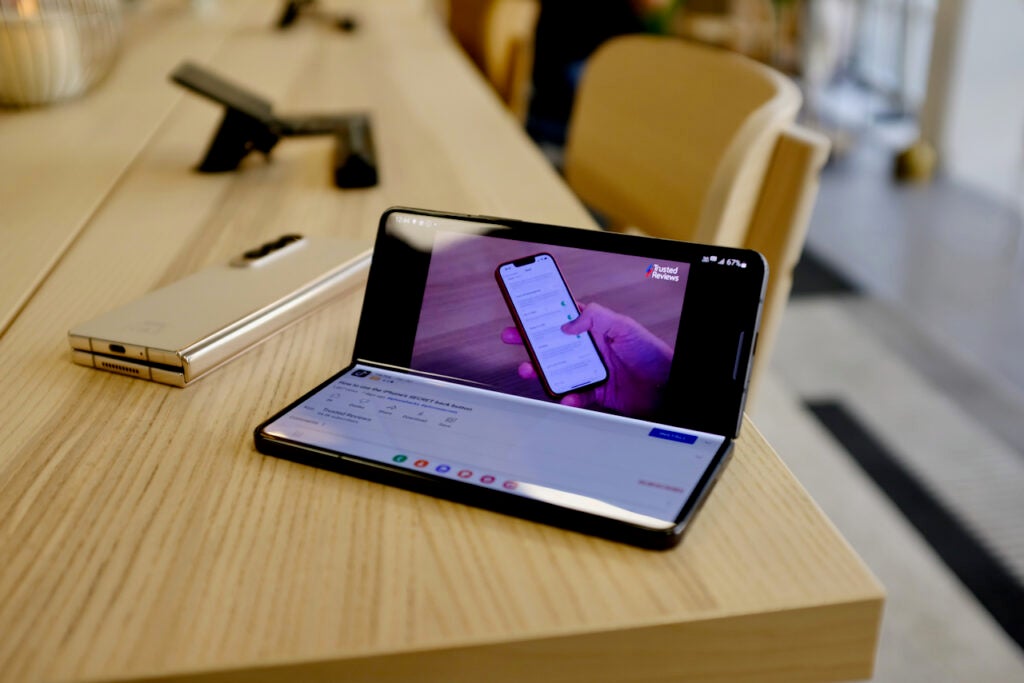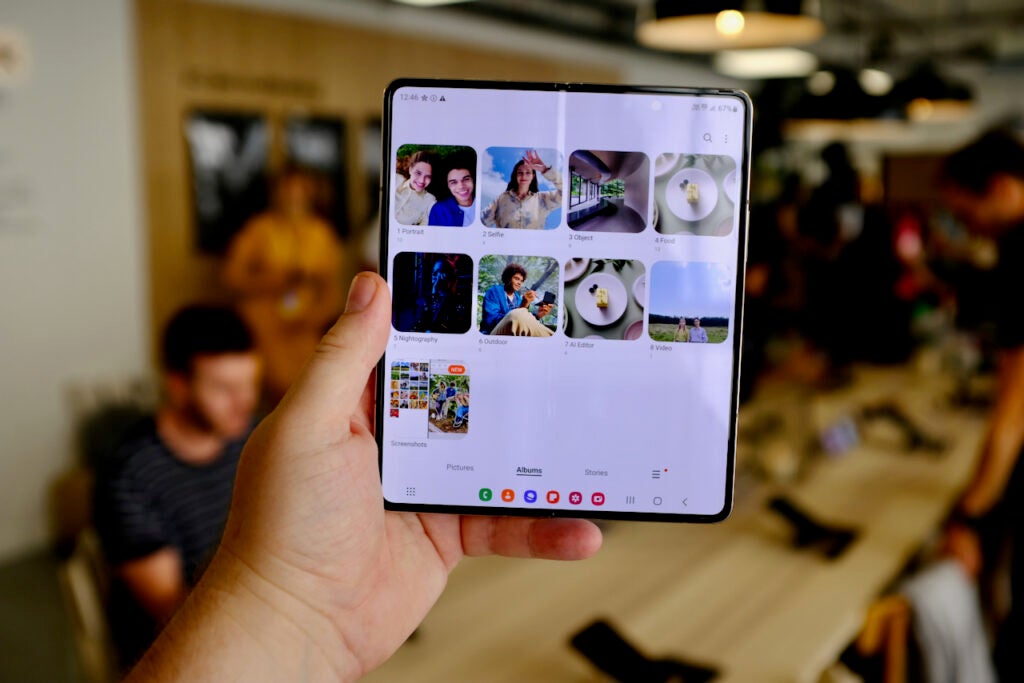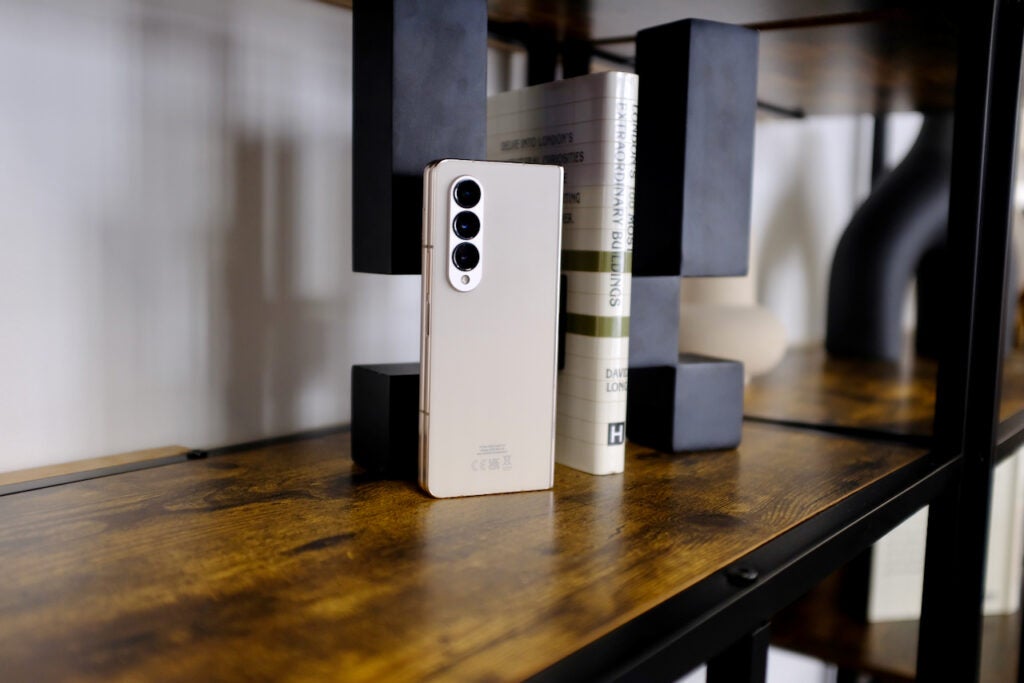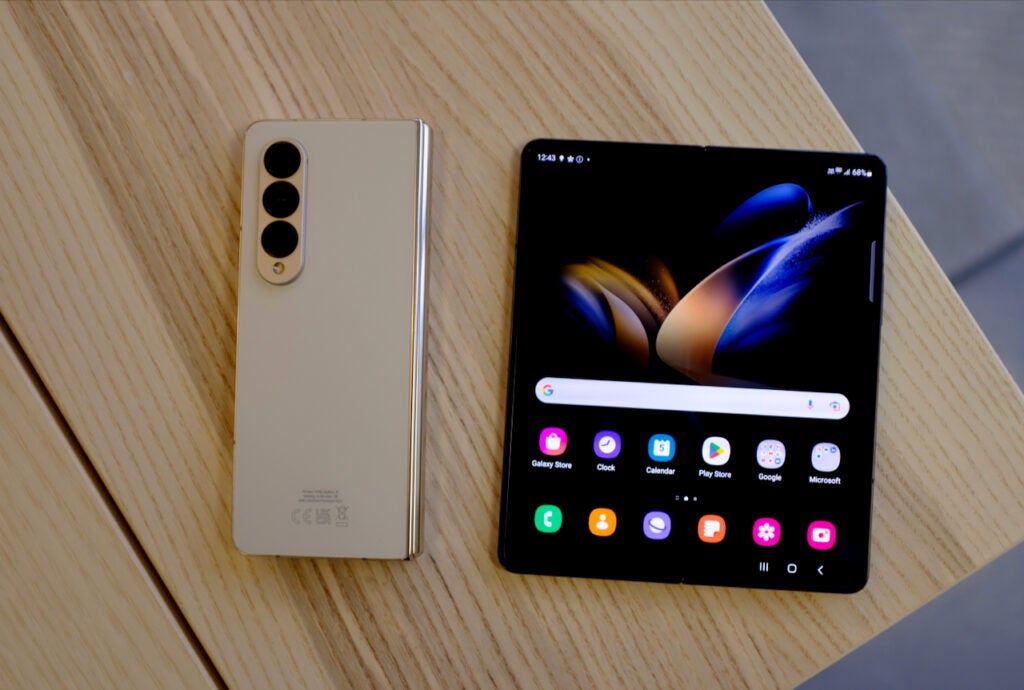Samsung’s Fold series has come a long way since its disastrous debut, which saw the first generation model all but fall apart in my hand.
-
Focus on durabilityIPX8 rating for water resistance and Gorilla Glass Victus -
Top-end internalsSnapdragon 8 Plus Gen 1 chipset, 12GB RAM and up to 1TB storage -
Two displaysOne outer 6.3-inch panel and another, larger 7.6-inch screen inside
Introduction
Having spent a couple of hours with the Galaxy Z Fold 4 ahead of its launch, it’s clear this is the most refined version of the foldable phone yet.
The Samsung Galaxy Z Fold 4 isn’t a huge shift for the series. It features a number of small, welcome upgrades that make an already very good phone likely even better.
Considering there remains very limited competition in this segment of the market, Samsung seems to be doing just enough each year to warrant a new version.
But if you haven’t been swayed by Samsung’s other three iterations of the Fold, I don’t think there’s much here to change your mind. Here’s why.

Screen and Design
Samsung has stood firm in what it believes a flagship foldable smartphone should look like, and the Z Fold 4 continues that.
While the Z Flip 4 is for people that want a foldable that takes a standard smartphone and makes it smaller, the Z Fold 4 is the version that really makes the most of the folding display tech in my mind. This is both a phone and a tablet, expanding when you want to watch a video or play a game and becoming smaller for everything else.
The blueprint for this Z Fold 4 is the same as all the previous versions. There’s a smaller outer display and a larger, 7.6-inch inner display that folds out. Samsung has made this screen slightly wider with a 23.1:9 aspect ratio, claiming this will help videos play with smaller black bars on either side. I haven’t spent enough time with the phone to really judge whether this change will make a noticeable difference yet. The black bars were a key annoyance on past models I reviewed, however.

The inner screen itself is packed with all the usual high-end features you’d find on a phone that costs this much. Samsung claims it can hit 1000 nits of peak brightness, packs a 120Hz adaptive refresh rate for smooth scrolling, supports the S Pen stylus and has a camera tucked underneath.
It’s fair to say that the under-display camera on the Z Fold 3 was terrible, however this one looks to be an improvement. It’s hard to spot the sensor unless you go looking for it and the few selfies I took looked much better than before. I think the purpose of this camera is more for basic video calls rather than snaps of yourself though – so the quality isn’t overly important to me.
The biggest issue with the display remains, though – and that’s the crease. While other foldables from the likes of Oppo and Xiaomi have managed to work at removing the annoying line down the middle of the screen, Samsung doesn’t seem to have bothered. It’s still as distracting as it was on the very first Fold device and that’s a bit disappointing.
The Z Fold 4 remains one of the only foldable phones around with an IPX8 water-resistance rating and it has Gorilla Glass Victus covering the displays. It’s also marginally lighter than the Z Fold 3, weighing 263g instead of 271g. That might seem a minor drop, but I noticed the lighter frame immediately during my time with the handset.

Specs and Features
The insides of the Galaxy Z Fold 4 have been refreshed and it’s packed with the usual array of high-end specs. Powering the phone, across all regions, is Qualcomm’s new 8 Plus Gen 1 chipset. This is a supremely capable chip and we’ve been impressed with its performance when we’ve tested it in other phones, like the OnePlus 10T.
Samsung spent a lot of time ahead of launch hyping up the camera improvements here, and hopefully it’ll be closer to the quality achieved by the Galaxy S22 Ultra. I was a bit disappointed with the cameras on the Z Fold 3, especially considering the high price.
On the back of the Galaxy Z Fold 4, there are three cameras: a main 50MP rear, a 12MP telephoto and a 10MP zoom lens with 30x digital zoom and 3x optical. Samsung says the main sensor has 23% brighter pixels and this plays into the focus on low-light performance in the Nightography photography modes. Samsung says low-light video should be more stable, too.
A lot of the bigger changes feel like they are in the software. Samsung reps said the Z Fold 4 will run a form of Android 12L – a version of Google’s OS designed specifically for larger phones and tablets – and the notable addition is a desktop-style taskbar. This sits at the bottom of the display and displays more apps than the typical Android dock. The taskbar can be pulled up when you’re in other apps, aiding multitasking.
Samsung didn’t confirm whether or not these changes would make their way to the older models of the Z Fold series, but it would be disappointing if they didn’t.
There’s a 4400mAh battery inside – that’s the same as you’d find in the Z Fold 3 – along with fast wired and wireless charging. This remains a fairly small cell considering the need to power two screens so I wouldn’t expect multi-day endurance. I’ll more thoroughly test the device’s stamina when I get my final review unit in.

First impressions
While I have only spent a short amount of time with the Galaxy Z Fold 4, it’s clear to me this is a modest upgrade. The smattering of changes feel small, but welcome, and if you’ve been holding out on a more complete foldable phone then this might be the time to bite.
Jargon buster
IP rating
An abbreviation for ‘Ingress Protection Code’, which lets you know to what extent a device might be waterproof or dustproof.
Nits
The brightness level of a display. 300 nits is regarded as the minimum target for high-end screens.
OLED and AMOLED
Types of displays that use self-lighting pixels to provide greater contrast and more vibrant colours than a typical LCD display, as well as sharper blacks.
















